Most people who think of women in the Army in World War II think of the Women’s Army Corps (WAC) and their work in dozens of non-combat specialties to free men for combat service. An even smaller, more select group of women were allowed to join the Women Air Service Pilots (WASP). While none of them flew combat missions, these women filled vital roles in the United States alongside male pilots. Their work advanced the war effort by freeing experienced male pilots to move to the front. Unlike other women’s service corps, such as the WAC or the Women Accepted for Volunteer Emergency Service (WAVES) of the Navy, the WASPs were not absorbed into the military during World War II. As such, they lacked veteran status for decades.
Twin Beginnings
The WASP began as two separate organizations: the Women’s Auxiliary Ferrying Squadron (WAFS) and the Women’s Flying Training Detachment (WFTD). Nancy Harkness Love, already a professional pilot, found herself straddling two worlds in early 1942. She knew many accomplished women pilots and worked for the Domestic Wing (later known as the Ferrying Division) of the Army Air Forces. Her husband, Robert Love, was Deputy Chief of Staff for Operations, Air Transport Command, United States Army. Robert’s superior, Col. William Tunner, realized the United States would face an immediate shortage of pilots as it entered World War II. Replacing pilots lost in combat would hinder movement of replacement planes and supplies within the United States. That shortfall could bring logistical support of air campaigns to a screeching halt. To Tunner, Nancy was a godsend: a ready-made solution to a coming crisis. With his advocacy, Nancy submitted a proposal for women to serve as auxiliary pilots. They would remain separate from the WAC, since the funding bill for the latter did not provide for flight pay. On September 5, 1942, Commanding General of the Army Air Forces Maj. Gen. Henry “Hap” Arnold swore Nancy in as the head of the WAFS, staffed by pilots she had invited to serve.
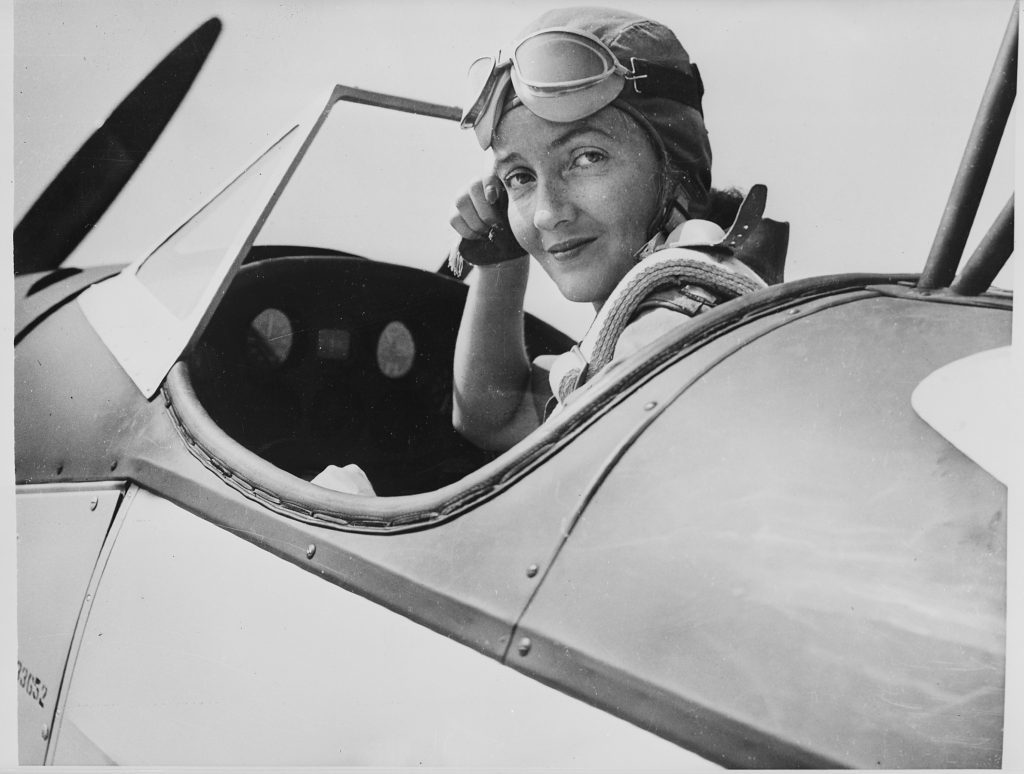
Nancy Harkness Love, circa 1942-45. National Archives and Records Administration
The WFTD was the brainchild of Jacqueline “Jackie” Cochran. An accomplished racing pilot and close friend of Amelia Earhart, Cochran had been flying in England to support their war effort. While there, she continued her two-year lobbying campaign to get the Army to recruit female pilots. Returning to America on September 10, 1942, she was dismayed to discover that, contrary to earlier assurances by Arnold, the Army had not only created a program for women pilots but had installed another woman to lead it. To resolve his mistake, Arnold ordered his subordinates to devise a solution. They returned with a merging of Nancy Love’s smaller but integrated program and Cochran’s large-scale, segregated plan. The WAFS continued as planned while Cochran created a training pipeline to bring untrained women in and make them pilots. The entire operation would be separate from Air Transport Command. Arnold approved and gave both women mere weeks to get their respective programs off the ground.
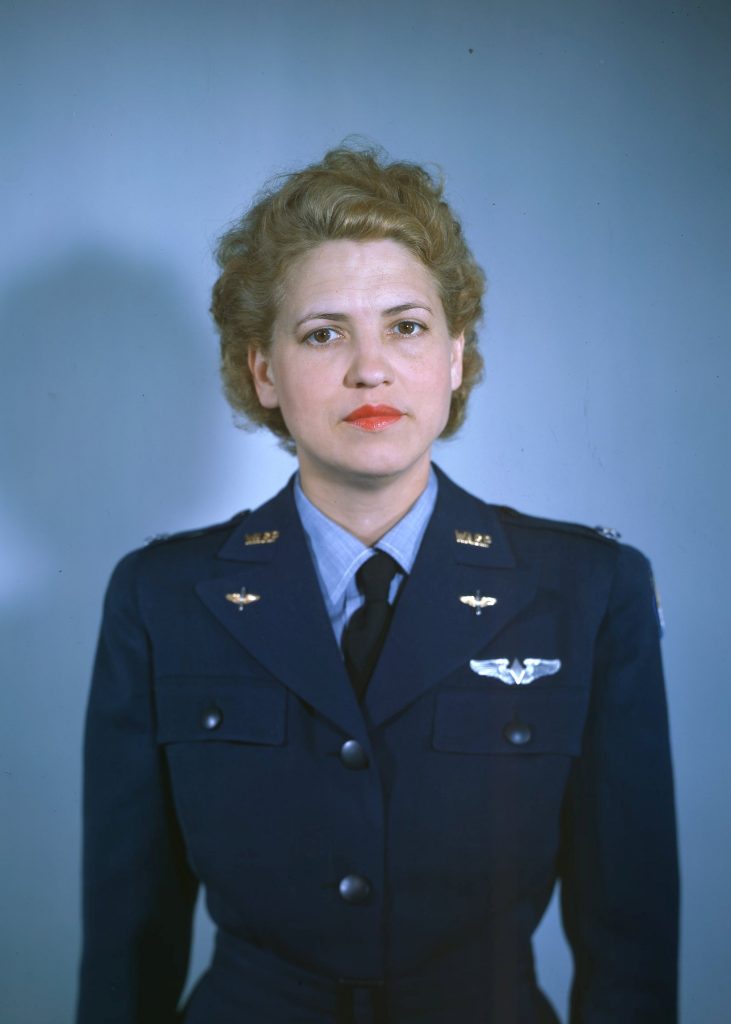
Jacqueline “Jackie” Cochran in WASP Uniform. National Archives and Records Administration
Breaking New Ground
The WAFS had little trouble meeting their timeline. The women Nancy Love recruited had at least 500 hours of flight time (the average flight time was over 1,000 hours). The women only needed to pass through an interview with Love, physical exams, flight checks, and a 30-day transition. Twenty-eight women passed the selection process and began ferrying planes on October 21, 1942. Enduring constant media surveillance and—at first—a very restrictive set of rules governing on- and off-duty behavior, the WAFS proved themselves reliable and above reproach. While WAFS missions began as short flights, by December 1942, women pilots were crossing the country on multi-day trips. They went from shuttling smaller planes from factories near the East Coast to moving pursuit aircraft and bombers from manufacturers around the country.
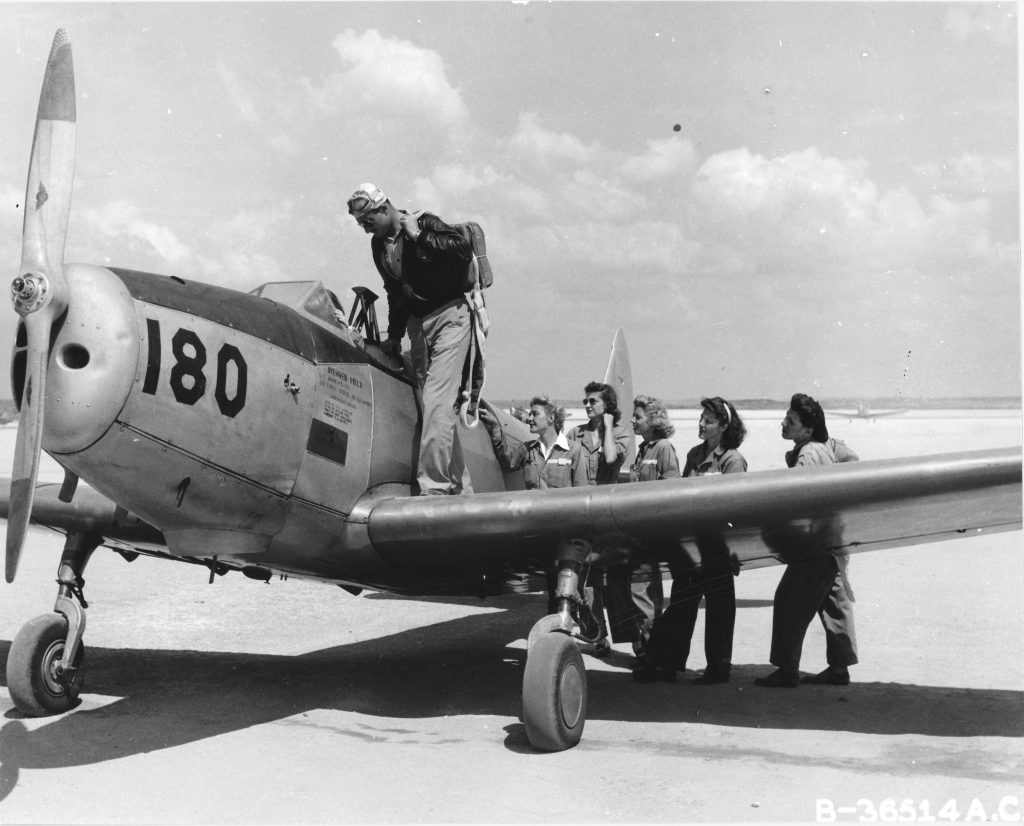
WASP Jo Ann Garrett gets a cockpit familiarization lesson from Instructor Herbert Hoogerwerf in a Fairchild PT-19. Fellow WASPs Lana Cusack, Enid Fisher, Mimi Platter, Nelle Carmody, and Ann Aldner look on. Avenger Field, Sweetwater, Texas; September 1943. National Archives and Records Administration
The WFTD, as a training organization, had lower standards for admission and had to “train up” pilots to meet Army standards. They needed “only” 200 hours of flight time and a commercial pilots license. Cochran and her newly-selected chief administrative officer Leoti “Dedie” Deaton had to build the infrastructure of the newly-established 319th Army Air Forces Flying Training Detachment (AAFFTD) from scratch. Despite all the difficulties, the first WFTD class began in November 1942, and on April 24, 1943, graduated 23 out of 30 trainees. Graduates headed either to one of the four WAFS ferrying groups or to other—more dangerous—assignments. Cochran’s training program produced 1,074 new pilots to bolster the Army’s capacity for domestic air logistics by moving planes and supplies.
Consolidating to WASPs
Cochran continued to lobby General Arnold for control of all female Army pilots. On July 5, 1943, Arnold folded and made Cochran the director of women pilots, subordinating Love’s WAFS to Cochran (though Love would retain her position as the head of female ferry pilots). To further the unification, Arnold deactivated the WAFS and WFTD as separate organizations on August 5, 1943, merging them into the newly created Women Air Service Pilots (WASP). This move sidestepped the growing push for integration among the ferry pilots by completely removing Love’s pilots from Ferry Division’s administrative control despite the division’s growing preference for women pilots over novice men.
Targets and Testing
While most WASP pilots flew ferry missions, some women were selected for more unique and risky operations. Beginning in August 1943, with the fourth WASP class, the Army began assigning women to classified training operations. They learned to pilot Navy A-24 and A-25 attack planes (the WAVES, being part of the Navy, could legally not fly combat aircraft at the time) and Army B-17 and B-26 bombers and flew targetry missions for Army and Navy training exercises. Towing target sleeves behind them, the women provided flying targets for anti-aircraft gunners and pursuit aircraft to practice against. The WASPs’ work with the Navy, in particular, helped save lives in the Pacific as anti-aircraft gunners protected their ships from bomber and kamikaze attacks. Placing their lives on the line in case the gunners missed—and though no WASPs were shot down, the gunners did occasionally miss—the women provided essential live-fire training for new gunners. Madeline Sullivan and Dorothy “Sadie” Hawkins had one of the closest calls when a B-24 crew (conducting their final live fire certification before transferring to the front) shot their engine out and forced an emergency landing. In fact, only the skill of WASP primary pilots and copilots, particularly in landing damaged planes (whether due to mechanical issues or, as Mary Ellen Keil understated, “[new] holes in some of the planes”), kept the programs from an unacceptable loss rate.
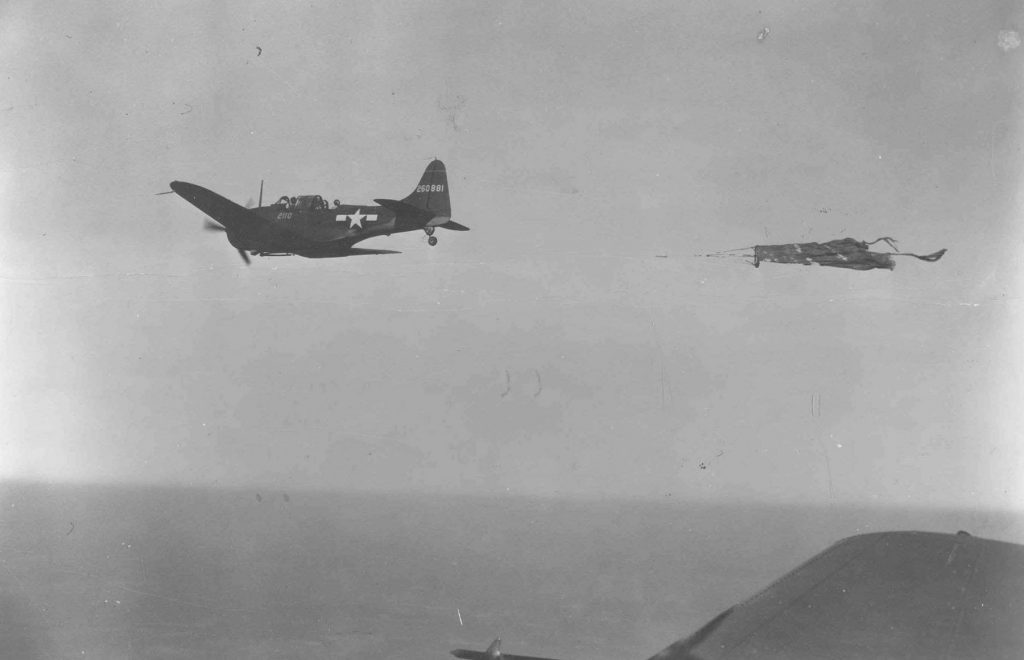
A-24 with target sleeve in tow returns to base after a targetry mission, 1944. U.S. Air Force
While running targetry missions for B-24 crews, Marjorie “Marge” Gilbert and Frances “Fran” Smith immediately won the respect for a single-engine landing where nearly everything went wrong. As they came in for the emergency landing, their hydraulics failed as they were descending. After pumping the landing gear down by hand they could not land on the primary runway and landed partly on the dirt on an auxiliary runway to avoid planes parked in the center. They not only landed without hitting the other planes, but managed to do it without damaging their plane further. Eyewitnesses (most of the pilots on ground had gathered to witness the landing) were shocked that they had landed without even popping a tire. Single-engine bomber landings, always a nerve-wracking event for even combat bomber crews, had become a rite of passage for many WASPs.
WASP pilots filled another vital role in the stateside war effort: testing planes. Like ground vehicles, aircraft with suspected mechanical issues needed to be tested to diagnose the specific problem. Following repairs, that same plane would need to be retested to confirm that the repairs were effective. Many male pilots balked at, or outright refused, to take on this necessary but very dangerous task. Into that void stepped the WASPs, who provided approximately 130 women across the country to ensure the safety of pilot trainees preparing for service at the front. Virginia “Gini” Dulaney later remembered that the aircraft assigned to training were in the worst condition, particularly the UC-78s. These aging bombers forced her to make multiple emergency landings in the course of testing repairs to where she decided “when they [the crew chiefs responsible for maintenance] wouldn’t go up with you, you knew damned well that you didn’t want to take that airplane up!” A specialized test-pilot job involved experimental radio-controlled target planes. One WASP, squeezed into a tiny drone aircraft, served as a failsafe for another WASP, who controlled the drone from a separate plane.
Demonstrating “It Can be Done”
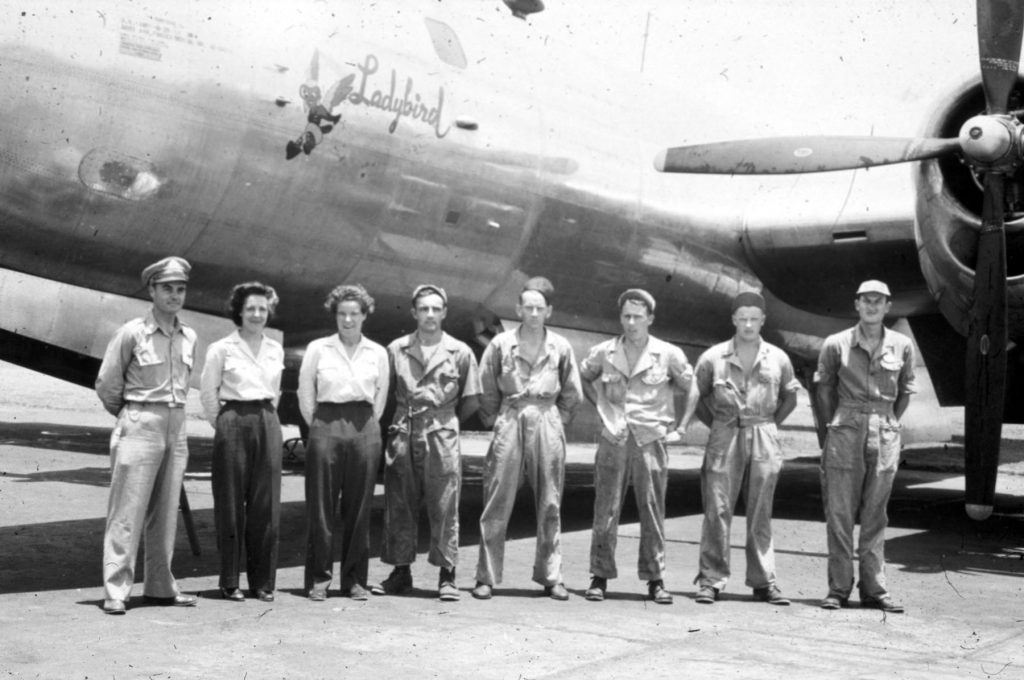
Dorothea Moorman (Left) and Dora Dougherty (Right), with Lt. Col. Paul Tibbets, Jr. (Far Left), and flight crew (Left to Right) Sgts. Gallagher, Duzenbury, Lemley, Wolfe, and Ellis in front of their B-29 ‘Ladybird’ before the 1944 demonstration tour. The nose art is ‘Fifinella,’ the WASP mascot. National Museum of the United States Air Force
In June 1944, a small group of WASPs transferred to Eglin Airfield in Florida (now Eglin Air Force Base) to learn to fly the new B-29 Superfortress. An experimental version of the plane had suffered catastrophic engine failure in 1943, and killed famed test pilot Edmund T. Allen. Despite a complete overhaul to correct the design defects, many in the Army Air Forces avoided the bomber at all costs. Col. Paul Tibbets, a renowned B-17 pilot, saw an opportunity to prove the B-29 could be flown. Women pilots were more willing to test the plane and their success would make male pilots feel like cowards for avoiding it. On their test flight with the massive bomber, WASPs Dora Doughtery and Dorothea “Didi” Moorman calmly handled an engine fire and showed the B-29 could return to base even with significant damage. The WASPs then went on a tour of the United States, logging around 50 flight hours as they showed up the hesitant male pilots until orders came from Washington to “stop those women from flying the B-29.” The WASPs played their role to perfection, taking the pilots, many of whom had served on the review board for Allen’s crash, up in the aircraft and demonstrating their control of the new bomber. While one pilot tried to quit the Army after his flight, the majority took comfort in the demonstration; without the WASPs’ willingness to take on this potentially deadly mission the B-29 (and thus the Enola Gay) might have never made it into operational service.
Undone by Ambition
WASPs had the opportunity to gain full military recognition as early as 1943, if they integrated in the WAC. Cochran found this unacceptable. She wanted the head of the WASPs (her, at the time) to be made a colonel in charge of an independent corps, not one subordinated to the WAC. Even though Soldiers in the Army Air Forces did not have their own, equal branch of service the WASP leadership wanted to gain equal standing with the WAC. The War Department denied all requests for militarization as a separate corps. Cochran then began a public-relations campaign to prod Congress to act. When the WAC formally joined the Army on July 1, 1943, the WASPs were left behind as auxiliary civilian contractors.
Cochran’s public lobbying efforts placed the issue into the realm of politics and special interest. Gen. Arnold saw a precedent in Public Law 38, which allowed physicians and surgeons to join an integrated Medical Corps. Cochran demanded that the women remain separate from the male Army Air Forces, which put her and Love (a proponent of full integration) at odds. Cochran got her way when H.R. 4219 proposed incorporating the WASP into the Army Air Forces in February 1944. The bill touched off a political firestorm as male flight instructors and pilots, seeing the war in Europe winding down, recognized their jobs would soon end. They would likely enter the Pacific theater while these women would continue their stateside duties. As survivability increased and more pilots rotated stateside for training and transport duties, demand for auxiliaries decreased. The Senate version of the bill never made it out of committee, with no explanation in congressional records. Whether this came from the decreasing needs in the war effort, political pressure by male pilot contractors, or due to the influence of Senate Majority Leader Alben Barkley (whose niece had been expelled from the WASPs and expunged from their records) is still a matter of debate. The WASPs remained civilians.
Disbandment and Legacy
In August 1944, Cochran recommended that the WASPs be disbanded if they would not be militarized. The Army Air Forces, many of whom Cochran had alienated, were eager to be rid of her. General Arnold, bowing to pressure, acknowledged he could no longer justify the use of the WASPs in October and sent the WASPs home by December 20, 1944. Many of the ferry pilots volunteered to continue serving for a salary of one dollar per year, but the Army’s decision had no loopholes to exploit. Other WASPs, such as Hazel Ying Lee, began trying to find their fellow pilots jobs with other countries, including the Chinese Air Force. By the end of 1944, 1,102 WASPs had flown 77 different types of planes more than 60 million miles. Except for combat missions, they had undertaken every task male pilots had along with the risks: 38 WASPs died in the line of duty.
After disbandment and the end of World War II, many former WASPs found integration into civilian life difficult. In 1949, WASPs were invited to join the newly-created Air Force Reserve, but only in a non-flying role. Cochran opposed women as pilots for the new service and actually testified against it in Congress on grounds that women should not be placed in potential combat roles during peacetime. Efforts to grant full veteran status to the WASPs languished in Congress until 1977. That year Senator Barry Goldwater, who had served alongside the WASPs as part of the Air Transport Command, forced hearings on the WASPs’ situation. With recognition bills stalling, he began attaching WASP recognition to every piece of legislation he could. Finally, on November 23, 1977, President Carter signed H.R. 8701 into law, granting the WASPs status as veterans. Delayed for decades by ego and prejudice, the WASPs’ incredible contributions to the United States’ success in World War II was recognized for what it was: military service in all but name. In 2009, the WASPs were presented the Congressional Gold Medal. Their efforts not only provided essential logistical support, but inspired new generations of women to serve.
Jonathan Curran
Graduate Historic Research Intern
Sources
Cole, Jean Hascall. Women Pilots of World War II. Salt Lake City: University of Utah Press, 1992.
Granger, Byrd Howell. On Final Approach: The Women Airforce Service Pilots of W.W. II. New York: Falconer Publishing Co., 1991.
Holm, Jeanne M., ed. In Defense of a Nation: Servicewomen in World War II. Arlington: Vandamere Press, 1998.
Keil, Sally Van Wagenen. Those Wonderful Women in Their Flying Machines: The Unknown Heroines of World War II. New York: Four Directions Press, 1990.
Landdeck, Katherine Sharp. The Women with Silver Wings: The Inspiring True Story of the Women Airforce Service Pilots of World War II. New York: Crown, 2020.
Merryman, Molly. Clipped Wings: The Rise and Fall of the Women Airforce Service Pilots (WASPs) of World War II. New York: New York University Press, 1998.
Morden, Bettie J. The Women’s Army Corps, 1945-1978. Washington, D.C.: U.S. Government Printing Office, 1990.
Oral History Interview of Miss Jacqueline Cochran by Captain Robert S. Bartanowicz and Major John “Fred” Shiner. 11-12 March, 1976. Typed Transcript. K239.0512-940. USAF Collection, AFHRA. Maxwell Air Force Base, Montgomery, Alabama.
Tredwell, Mattie E. Special Studies: The Women’s Army Corps. Washington, D.C.: U.S. Government Printing Office, 1991.
